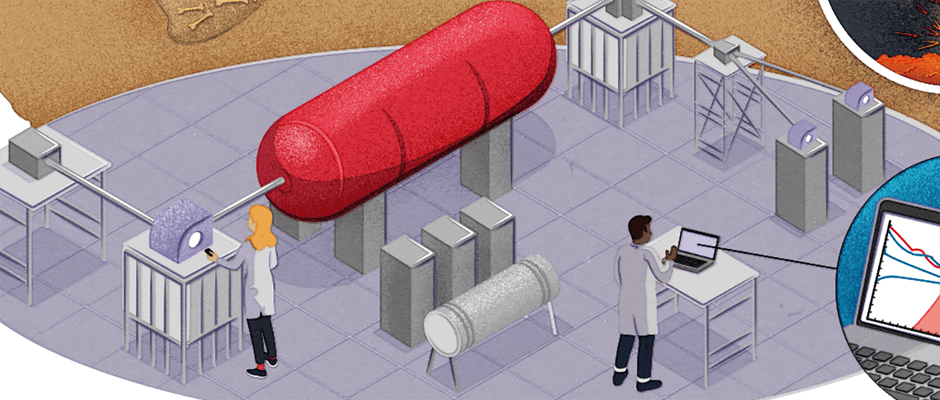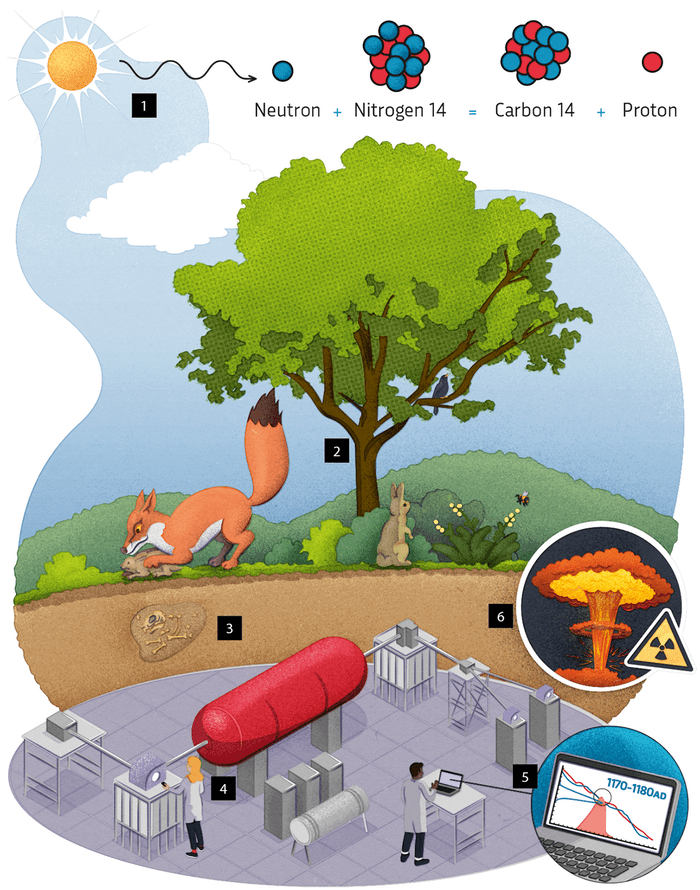
Carbon dating: How scientists hack radiation to age ancient artefacts
It's used to determine the age of organic materials (e.g. wood, charcoal, and bone) by measuring the amount of the radioactive isotope, carbon-14, remaining in the sample.
Radiocarbon dating is used by scientists – including archaeologists and geologists – to uncover the mysteries of our planet's past. By measuring the amount of carbon-14 remaining in organic materials, radiocarbon dating can determine the age of ancient human remains, fossils, archaeological artefacts, and even historical documents with remarkable accuracy.
How radiocarbon dating works
Step 1
High-energy cosmic rays, in the form of neutrons, strike nitrogen atoms in the upper atmosphere and convert them to the radioactive isotope of carbon, which is carbon-14 (also known as radiocarbon). This quickly oxidises to create mildly radioactive carbon dioxide. About 1.1 per cent of the carbon atoms on Earth are carbon-14.
Step 2
Plants absorb radiocarbon, along with normal carbon dioxide, during photosynthesis and incorporate it into their tissues. Herbivores eat the plants, and carnivores eat the animals, and so the radiocarbon spreads through the food chain, eventually reaching even the deepest oceans.
Step 3
Radiocarbon is unstable, and slowly decays back to nitrogen. The half-life of carbon-14 (the period of time after which half of a given sample will have decayed) is about 5,730 years. When a plant or animal dies, it stops absorbing new carbon, so the proportion of radiocarbon in their body gradually drops due to this radioactive decay.

Step 4
Scientists can measure the ratio of carbon-14 to the stable isotopes carbon-12 and carbon-13 with an accelerator mass spectrometer (AMS). This uses an electric field to accelerate carbon ions past a magnet that deflects their trajectory. Carbon-14 is heavier, so is deflected less. The older the sample, the less radiocarbon is still present.
More like this
How accurate is radiocarbon dating?
Radiocarbon dating is believed to be accurate to within a few decades or centuries, with lower accuracy the older the sample. Dating anything older than 50,000 years is very difficult since so little radiocarbon remains after that long, but some measurements of samples up to 75,000 years old have been made.
In the 1950s and 1960s, nuclear weapons tests briefly doubled the levels of radiocarbon in the atmosphere and radiocarbon dating needs to account for this to remain accurate. Conversely, burning fossil fuels since 1900 has steadily lowered the amount of radiocarbon, because coal, oil and gas are all formed from plants and animals that died millions of years ago and so have essentially no radiocarbon left.
Read more:
- How does echolocation work?
- How is coal formed?
- How do the chambers of the heart work?
- How does a ground source heat pump work?
To submit your questions email us at questions@sciencefocus.com (don't forget to include your name and location)
Authors

Luis trained as a zoologist, but now works as a science and technology educator. In his spare time he builds 3D-printed robots, in the hope that he will be spared when the revolution inevitably comes.
Sponsored Deals

May Half Price Sale
- Save up to 52% when you subscribe to BBC Science Focus Magazine.
- Risk - free offer! Cancel at any time when you subscribe via Direct Debit.
- FREE UK delivery.
- Stay up to date with the latest developments in the worlds of science and technology.




